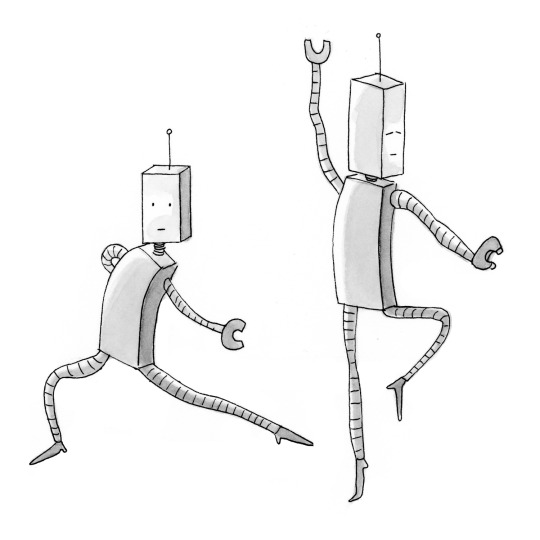#navied mahdavian
Explore tagged Tumblr posts
Text

A David Lynch Tribute in The New Yorker Cartoons by Navied Mahdavian and Ellis Rosen.
#David Lynch#New Yorker#Lynch#art#illustration#Laura Palmer#Twin Peaks#The New Yorker#The New Yorker Cartoons#God#Navied Mahdavian#Ellis Rosen
704 notes
·
View notes
Text

New Yorker Cartoon by Navied Mahdavian and Ellis Rosen.
3 notes
·
View notes
Text
Remembering DAVID LYNCH
Filmmaker David Lynch passed away last week at the age of 78. I just have to say that 78 kind of feels young to me for someone to die these days, but that’s actually about four years past the average American male’s lifespan. I guess it seems like with most celebrities, you hear of them living into their 80s and beyond more often. Still, 78 is a good age; he certainly lived a full life. I…

View On WordPress
0 notes
Text
This Country is an interesting fish out of water story about searching for a home in rural America
This Country is an interesting fish out of water story about searching for a home in rural America #comics #comicbooks #graphicnovel
Before Navied Mahdavian moved with his wife and dog in November of 2016 from San Francisco to an off-the-grid cabin in rural Idaho, he had never fished, gardened, hiked, hunted, or lived in a snowy place. But there, he could own land, realize his dream of being an artist, and start a family—the Millennial dream. Over the next three years, Mahdavian leaned into the wonders of the natural Idaho…

View On WordPress
#featured#graphic novel#graphic novels#navied mahdavian#princeton architectural press#this country: searching for home in very rural america#video
1 note
·
View note
Text


Saw the original and immediately knew what I had to do. (Credit to Navied Mahdavian for the original comic!)
#good omens#crowley#aziraphale#ineffable husbands#aziracrow#good omens fanart#fanart#go2#ineffable spouses#ineffable idiots#fan comic#go fanart#good omens comic#velvet underground#anthony j crowley#gomens
107 notes
·
View notes
Text

Tribute to David Lynch in the Daily New Yorker Cartoon by Navied Mahdavian and Ellis Rosen.
20 notes
·
View notes
Text
All the books I read in 2024
Felicity -by Joyce Y. Ng Pacific Dream -by Vincent Lau Memento Amoris - by Anya Martin SACRED BODIES - by VER Here Be Monsters Bones In Fair Verona - by Val Wise by Val Wise Leaf Litter - Jarod K Anderson A Taste of Life - Sara Paretsky Autism Is Not a Disease: The Politics of Neurodiversity - Jodie Hare Love, Pamela - by Pamela Anderson read by Pamela Anderson Cat Pictures Please - by Naomi Kritzer How to Hide an Empire - by Daniel Immerwahr read by Luis Moreno It Eats What Feeds It Vol. 1 - by Max Hoven, Aaron Crow illustrated by Gabriel Iumazark The Mushroom at the End of the World Anna Lowenhaupt Tsing Three Rocks: The Story of Ernie Bushmiller: The Man Who Created Nancy - by Bill Griffith illustrated by Bill Griffith Palestine - by Joe Sacco illustrated by Joe Sacco An Age Of License - by Lucy Knisley illustrated by Lucy Knisley Disquiet - by Noah Van Sciver illustrated by Noah Van Sciver Collapse - by Vladislav M. Zubok read by David De Vries The Mere Future - by Sarah Schulman Postcards From Congo - by Edmund Trueman The Night Eaters #1: She Eats the Night - by Marjorie Liu illustrated by Sana Takeda The Night Eaters Book 2: Her Little Reapers - by Marjorie Liu illustrated by Sana Takeda Bandit - by Molly Brodak Kent State: Four Dead in Ohio - by Derf Backderf illustrated by Derf Backderf Womb City - by Tlotlo Tsamaase From Conflict to Community - by Gwendolyn Olton Ephemera: A Memoir - by Briana Loewinsohn illustrated by Briana Loewinsohn This Country: Searching for Home in (Very) Rural America - by Navied Mahdavian illustrated - by Navied Mahdavian Misnatched - By Anne Camlin Illustrated by Isadora Zeferino 12 Rules for Strife - Jedd Sparrow and Sam Wallman Legalization Nation - Brian Box Brown My Monster Girlfriend - Smut Peddler All the Violet Tiaras - Jean Menzies Here - Richard McGuire Far Distant - A Liang Chan Spores - Joshua Barkman Taproot -Keezy Young Dreamtoons - Jesse Reklaw Stages of Rot - Linnea Sterte
8 notes
·
View notes
Photo

40 Funny, Relatable And/Or Absurd One-Panel Comics From New Yorker Cartoonist Navied
92 notes
·
View notes
Text
35 Non-fiction Graphic Novels by BIPOC Authors
Every month Book Club for Masochists: A Readers’ Advisory Podcasts chooses a genre at random and we read and discuss books from that genre. We also put together book lists for each episode/genre that feature works by BIPOC (Black, Indigenous, & People of Colour) authors. All of the lists can be found here.
This Place: 150 Years Retold
Zodiac: A Graphic Memoir by Ai Weiwei with Elettra Stamboulis & Gianluca Costantini
Nat Turner by Kyle Baker
The Talk by Darrin Bell
The Best We Could Do by Thi Bui
I’m a Wild Seed by Sharon Lee De la Cruz
Messy Roots: A Graphic Memoir of a Wuhanese American by Laura Gao
Stamped from the Beginning: A Graphic History of Racist Ideas in America by Joel Christian Gill and Ibram X. Kendi
Wake: The Hidden History of Women-Led Slave Revolts by Rebecca Hall and Hugo Martinez
The 500 Years of Resistance Comic Book by Gord Hill
Good Talk: A Memoir in Conversations by Mira Jacob
The American Dream? A Journey on Route 66 Discovering Dinosaur Statues, Muffler Man, and the Perfect Breakfast Burrito: a Graphic Memoir by Shing Yin Khor
Banned Book Club by Kim Hyun Sook, Ryan Estrada, and Ko Hyung-Ju
In Limbo by Deb J.J. Lee
This Country: Searching for Home in (Very) Rural America by Navied Mahdavian
Mexikid: A Graphic Memoir by Pedro Martín
Monstrous: A Transracial Adoption Story by Sarah Myer
Steady Rollin': Preacher Kid, Black Punk and Pedaling Papa by Fred Noland
Citizen 13660 by Mine Okubo
Your Black Friend and Other Strangers by Ben Passmore
Kwändǖr by Cole Pauls
Worm: A Cuban American Odyssey by Edel Rodriguez
Power Born of Dreams: My Story is Palestine by Mohammad Sabaaneh
A First Time for Everything by Dan Santat
Persepolis: The Story of a Childhood by Marjane Satrapi
Grandmothers, Our Grandmothers: Remembering the "Comfort Women" of World War II by Han Seong-Won
Death Threat by Vivek Shraya and Ness Lee
Palimpsest: Documents From A Korean Adoption by Lisa Wool-Rim Sjöblom
Big Black: Stand at Attica by Frank "Big Black" Smith, Jared Reinmuth, and Améziane
Victory. Stand!: Raising My Fist for Justice by Tommie Smith, Dawud Anyabwile, and Derrick Barnes
The High Desert by James Spooner
They Called Us Enemy by George Takei, Justin Eisinger, Steven Scott, and Harmony Becker
Feelings by Manjit Thapp
The Black Panther Party: A Graphic Novel History by David F. Walker and Marcus Kwame Anderson
Now Let Me Fly: A Portrait of Eugene Bullard by Ronald Wimberly and Braham Revel
8 notes
·
View notes
Text

A cartoon by Navied Mahdavian. #NewYorkerCartoons
See more from this week’s issue: http://nyer.cm/njNtHJg
47 notes
·
View notes
Text
Review: This Country
This Country: Searching for Home in (Very) Rural America, by Navied Mahdavian (Princeton Architectural Press 2023) First line: “Listen to this: ‘There is much confusion between land and country. Country is the personality of land, the collective harmony of its soil, life, and weather.’” When I read an early review of this one in a […]Review: This Country

View On WordPress
1 note
·
View note
Photo

Ah, yes...well, while this might be true, I’ve still got my eye on you AI!
8 notes
·
View notes
Text
A Case for Scanners.
Non-artists often assume that once a drawing is completed, the art process stops. As most professionals will tell you, that's not the case! Capturing an image for reproduction, and making sure that it represents the original work well, is oftentimes an art form of its own. Since this topic isn't something that has been given a lot of air time on here, I thought it would be fun to ask some folks who do a lot of non-digital work, with (seemingly little) processing, if they had any hard-earned advice on how to get a final image!
I hope everyone is having a nice summer, and that you all are making lots of art! —Jane
Roz Chast
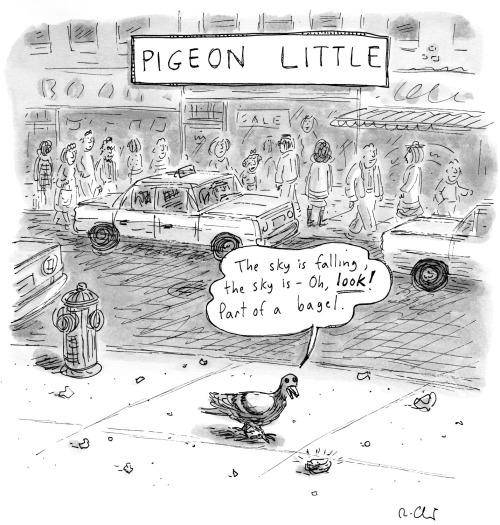
Find this print here!
How do you get images of your work? For reproduction, I use a basic Epson scanner I got on Amazon a few years ago (my old Canon one died). Cost maybe $175. My only complaint is that it only goes up to 8.5 (maybe 8.7) by about 11.5 inches. If the image is bigger, I scan it in parts and put it together. The Epson scanner is excellent. You can scan up to 1200 dpi which was useful when I did drawings that were 9 by 12 inches and they were blown up 9 by 12 feet, and they looked FAB. I was amazed. I also once scanned an embroidery that the NYer used on a cover and it worked fine.
But for just sending someone a quick pic of something, or posting to Insta, I use my camera. Oh, and for pysanky eggs, I use my camera. LOL, wouldn't be good to smash them flat in the scanner.
What are your best tips for getting a good image? If the item you want to scan is a little rumpled or wrinkled, press down hard on your scanner lid before scanning. Also, I use Photoshop to optimize the image--mainly brightness and contrast and to remove patch shadows etc. And for embroideries and pysanky eggs, I use my camera and photograph them in natural light outside. Not in bright sunshine or dark shade-- in between.
Does your method differ when capturing a colorful image vs something black and white? Not really. But I do adjust for brightness and contrast with Photoshop, no matter if it's in the scanner or the camera, b & w or color.
Joe Dator
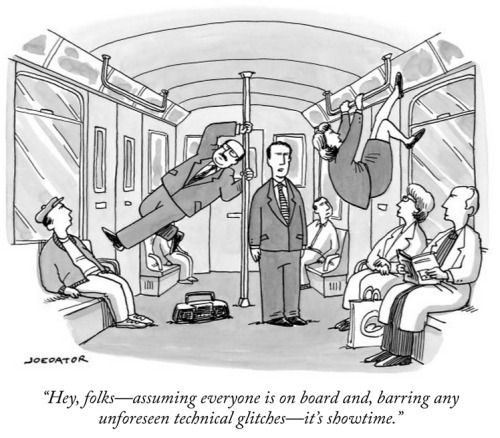
You can find this print and more here.
How do you get images of your work? I scan my images. Ever since The New Yorker stopped accepting original artwork, the cartoonists have had to scan their own work and send it as a digital file. It's been a source of some frustration for me, as I used to rely on the top-of-the-line scanners at Condé Nast's imaging department, but now the quality of my published work is dependent on whatever modestly priced scanner that I can afford to have at home. For a while I was using a Brother and then an Epson all-in-one printer/scanner, though neither were very good at capturing the nuance of wash shading. I've now got a Canon 300, which is a dedicated scanner, and is somewhat better, though not by much. It's adequate for its very low price, I suppose. All of this has led me in some cases to scan my work as line art and then add the grey or color areas digitally, or sometimes to bypass scanning entirely and just create digital art.
What are your best tips for getting a good image? It's always better to go a little bit darker and then lighten the image after the fact, because that way you've captured the information that is there. You can subtract information if there's too much of it, but you can't add in formation that wasn't captured in the first place. I always take a very high resolution scan, 600 dpi, and then adjust the image in Photoshop, mostly with the Levels feature. I'll also go in very close to the image and go over it with the eraser tool, removing any dirt or blotches that I see. This is made much easier if I remembered to Windex the glass before scanning! Best tip: clean the glass first! I have wasted hours of time cleaning up images because I forgot to wipe the glass clean before scanning!
Does your method differ when capturing a colorful image vs something black and white? No difference in how I capture the image from the scanner, but the way I will clean the image up in Photoshop differs slightly, because for a color image I will use the Levels as well as the Hue/Saturation and Color Balance features.
Amy Hwang
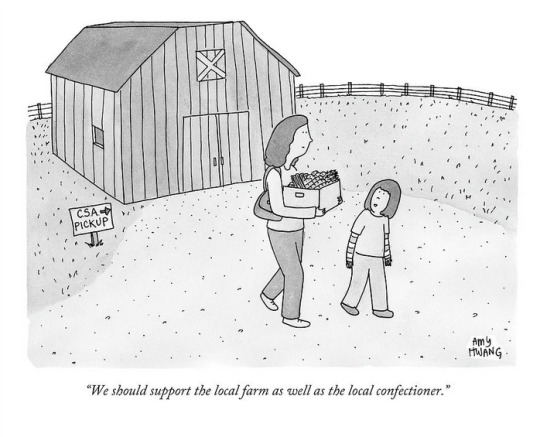
Find this image here!
How do you get images of your work? Flatbed scanner
What are your best tips for getting a good image? I used the photo setting to scan my work. For watercolor paper that isn't completely flat, I'll weigh it down with a stack of copy paper and place a heavy hardcover book on top of that. I'll also weigh the sheet down with my hands as the scanner bulb moves under it.
Does your method differ when capturing a colorful image vs something black and white? No.
Ivan Ehlers

Find this print here!
How do you get images of your work? If it’s a work of ink on paper, I’ll usually do the ink drawing first and then scan that just to be safe in case I screw it all up with the wash/color. If I screw it up, then I will do a digital wash/color pass in Photoshop. If all goes well, then I’ll scan the drawing again and adjust digitally as needed.
What are your best tips for getting a good image? Take the time to figure out your scanner and to learn which values will get lost in the scan and how to deal with that, either preemptively on the drawing itself or digitally after it’s scanned.
While scanning, if it’s a black-and-white image, scan in black-and-white. You’ll get more of what you want without the scanner trying to make sense of random color information that may exist on the paper. And the higher the resolution, the better the image (and information within the image) will be.
Once you get that image imported, throw it into Photoshop and hit Command-L to mess with the levels. This is where you’ll find the sweet spot of making the lines/wash darker, the mid-tones lighter (if you want to erase the background) or darker (if you want to show the wash/paper more) and your contrast (again, if you want to make the background paper ‘disappear’).
Also, depending on how the work is showcased (digitally, printed small on newsprint, professionally printed on expensive materials), you will learn what matters and what really does not. If people are just going to see the image on their cell phones, it doesn’t matter if the image doesn’t look absolutely perfect when zoomed in 6000%. If it’s for print on newsprint, there’s a limit to how much detail will show and how much color information will transfer. It's easy to get lost in a spiral of saying "It doesn't look exactly like the original!" Look at photos of original paintings, then go see them in real life. It never looks the same!
Does your method differ when capturing a colorful image vs something black and white? Black-and-white images are much easier to capture/edit in that the amount of information is dramatically lower than that of a color image. When working with black-and-white images, your concerns are mainly with levels (see above).
When working with color images, you still have to deal with the levels but add to the equation a step of color correction (or color mixing for those who consider the term ‘correction’ inherently pejorative and indicative of an error).
Getting color right is the hardest part. It’s like trying to find the simultaneous determination of position and momentum of an electron—You can either get a good line quality and contrast, or you can get good and true color, but you can’t get both. (This is of course me being dramatic. You can get both, but you better have a much better scanner than most of us can afford.)
If you need to ask how much a really good scanner is, you can't afford it.
Carolita Johnson
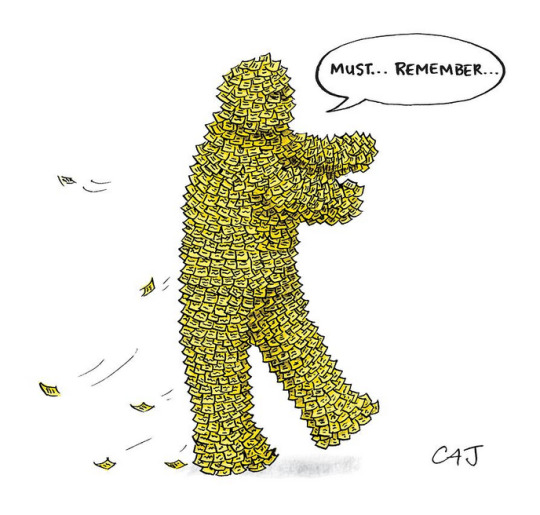
Find this print here!
Scanners are great for flat work without ripples. I flatten my stuff under two very thick, heavy pieces of plexiglass and with a piece of paper on either side of the original against the plexiglass after a very light fine misting with water if it’s too rippled.
Otherwise I remember Andy Pilsbury at TNY used to take photographs of fine color art — especially if it had a lot of texture— in his special studio.
Jenny Kroik
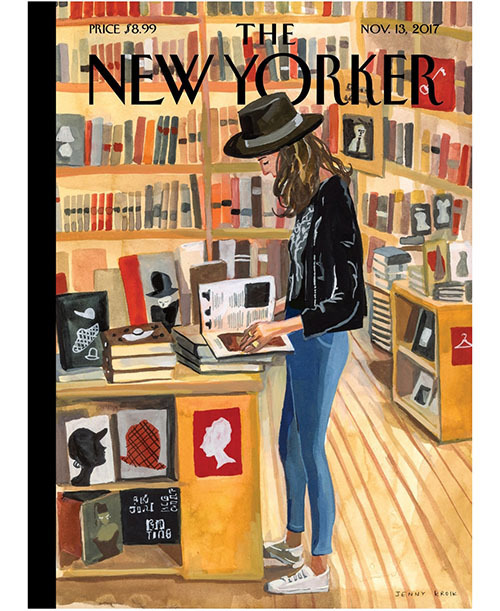
Buy this print here!
I use an Epson scanner. Mine isn't great, so I have to do a lot of Photoshop tweaking for color precision. I've been meaning to get a better scanner for ages! Get a nicer one, and you might not need to do as much color-correcting. (I got the cheapest one for like $70). Scan stuff at at least 600 DPI.
Also, my laptop has a retina display. I think they all do that now, I'm not sure.
Navied Mahdavian
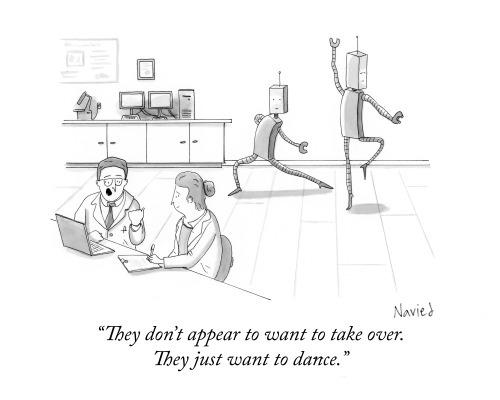
Find this print here!
How do you get images of your work? I use an Epson V600 Photo scanner. I've used a few scanners and it's my favorite.
What are your best tips for getting a good image? I usually scan at 600 dpi for finished images. I use Photoshop to clean up an image and adjust black and white (make whites true white etc.).
Does your method differ when capturing a colorful image vs something black and white? I usually do black and white, so I'll use the greyscale scanning setting. If I do use color I just switch it to color. Otherwise, all the same.
Michael Maslin

Find this print here!
How do you get images of your work? An Epson V550Scanner....probably 5 years old, still works well.
What are your best tips for getting a good image? Don't have tips. I just make sure the image on the screen looks as close as possible to the original piece. As I'm dealing with a simple ink line with some pencil added on, it's not a complicated replication. Rarely have to do anything with/to what comes up on the screen.
Does your method differ when capturing a colorful image vs something black and white? For me, it's fairly simple as the drawing is an ink line with a small amount of pencil added. I've noticed that color pieces invite messing around with "saturation" and those other tools. I almost always end up liking the "adjusted" image better than the original.
--
If you enjoy this blog, and would like to contribute to labor and maintenance costs, there is a Patreon, and if you’d like to buy me a cup of coffee, there is a Ko-Fi account as well! I do this blog for free because accessible arts education is important to me, and your support helps a lot! You can also find more posts about art supplies on Case’s Instagram and Twitter! Thank you!
#how to scan art#how to draw new yorker cartoons#roz chast#joe dator#navied mahdavian#carolita johnson#jenny kroik#michael maslin#amy hwang#ivan ehlers
15 notes
·
View notes
Photo

Caption contest cartoon by Navied Mahdavian My Entry in The New Yorker Cartoon Caption Contest #730 buff.ly/3kwgkGW #NaviedMahdavian #TheNewYorker #mouse #lab #Cartoon #CaptionContest https://www.instagram.com/p/CG0YpIZh9WC/?igshid=4d3faux6xwyp
0 notes
